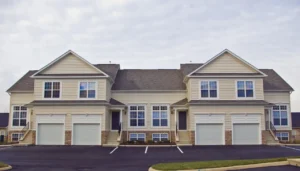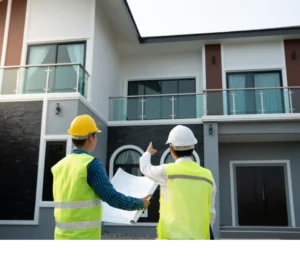National renewal rates outperforming new leases by wide margins

Retention, Not Rent Hikes, Is Sustaining Multifamily Revenue
Tenant renewals have quietly emerged as one of multifamily’s most powerful stabilizers this year, cushioning property income from the weaker pulse of new leasing. That dynamic—fewer renters moving out and more paying extra to stay put—is quietly reshaping how operators sustain net operating income amid slower rent growth and a cooling economy.
Data Shows Renewals Outpacing New Leases
During Yardi Matrix’s recent multifamily webinar, Vice President Jeff Adler and Director of Research Paul Fiorilla said national renewal rates are consistently outperforming new leases by wide margins across most U.S. markets.
Renewal rent growth in the three‑and‑a‑half to four percent range has held steady even as asking rents on new leases have flattened or declined in high‑supply metros. “People are staying longer, paying more, and it’s propping up NOI,” Adler said.
The data reveal a shift in renter behavior that extends beyond temporary market adjustments. Turnover rates have dropped 10 to 15 percent, and renters appear increasingly motivated by stability rather than savings.
High homeownership costs remain the primary reason: mortgage rates and entry prices have kept first‑time buyers on the sidelines. But age is another factor.
“Renters are getting older,” Adler noted, adding that the appetite for frequent moves diminishes as households mature and accumulate possessions. That demographic trend—fewer twenty‑something transients, more established households in their thirties and forties—has quietly become a financial buffer for multifamily owners.
Screen Your Tenant Today!
Gain peace of mind with AAOA’s credit, criminal, and eviction reports.
Renewal Premiums Drive Rent Roll Strength
Renewals’ growing share of rent roll income is significant not only because they reduce vacancy loss but also because they occur at higher effective rates. In rent‑roll comparisons presented during the webinar, renewal rents outpaced new‑lease trade‑outs in nearly every market except a few high‑turn metros such as Manhattan and northern New Jersey.
Two‑bedroom units, a proxy for maturing households and small families, showed the biggest gap, with renewal premiums averaging well above those of new leases.
That imbalance has cushioned property revenues during a period of softening leasing demand, particularly in Sun Belt metros where supply pipelines remain heavy. Operators are increasingly turning to renewal strength to offset the short‑term drag of rent concessions and slower absorption in new properties.
Yardi’s forecast anticipates national occupancy stabilizing in the mid‑90 percent range through 2026, thanks largely to residents choosing not to move.
The interplay between renewals and NOI isn’t just about pricing power—it’s about predictability. High retention rates translate to steadier expense management, since turnover costs from marketing and unit prep fall when tenants stay longer.
While operating expenses have continued to rise, particularly for insurance and utilities, Yardi data show the worst of cost escalation has eased. With expense growth moderating to about two‑and‑a‑half percent, even modest income gains from renewals can preserve margins.
A Market Built on Staying Power
For owners and investors, the takeaway is that the market’s resilience is being built from within existing portfolios rather than through new rent surges. Adler characterized the environment as “normalized,” where revenue growth comes from disciplined operations, not exuberant leasing cycles. That normalization has lowered downside risks, especially as development and financing constraints slow new supply additions after 2025.
Demographically, the renewal boom mirrors a broader maturation of renter households. Household formation is expected to steady at roughly 850,000 a year this decade, down from pre‑pandemic highs, with multifamily capturing roughly half that total.
As younger renters age in place and home purchase remains out of reach for many, the renter population is evolving from transitional to long‑term. In Yardi’s view, that change will keep renewal metrics strong and sustain income stability even as new‑lease growth weakens.
Source: GlobeSt.













 Accessibility
Accessibility